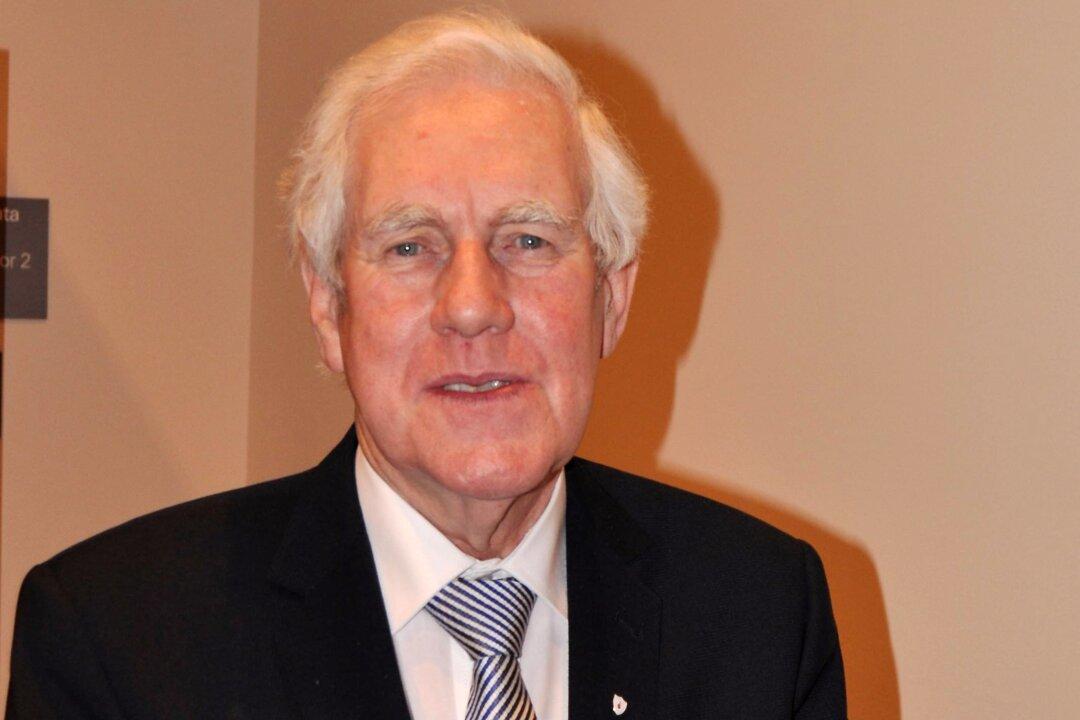The Central Statistics Office (CSO) has reported that total emigration from Ireland in the year up to April 2013 is estimated to have reached 89,000, an increase of 2.2 per cent on the 87,100 recorded the previous year. Figures for the year ending in April 2014 are due to be released this August.
Emigration has long played a role in the lives of many Irish people. However, the scale of the problem has tended to vary over time, giving rise to the cyclical nature of emigration. To find out more about the developments of recent years, the Epoch Times spoke with Mr Declan Smyth, a statistician with the CSO.
Smyth explained that the current series of data on emigration that the CSO publishes goes back to 1987, and it’s compiled on an annual basis. It is broken down in terms of immigration and emigration, which is further divided up by age group, nation of origin, and destination. The main source of the emigration statistics is the national quarterly household survey—formally referred to as the Labour Force Survey—which was established in 1987. Prior to this series of surveys, the CSO has figures going back to the 50’s on net migration (immigration and emigration combined over consecutive census data sets for 5-year periods).
The figures are estimated based on a sample of households surveyed across Ireland. The survey collects data not just on migration, but also on other key economic indicators, such as unemployment and labour force participation, said Smyth.
One section of the questionnaire touches on the subject of migration, both into and out of the country. The findings from these quarterly national household surveys are used to derive the figures for annual migration.
Cyclical Trends over time
Looking at the net migration component from the 50’s, Smyth says: “We would have experienced net migration out of the country from the 50’s to the 60’s. Then, from 1971 until 1978, we experienced net inward migration. To put that into numbers, we estimate that between 1951 and 1971, we had a net outward migration of about 579,000. Then, from 1972 up to 1979, we had a net inward migration of the order of 109,000.”
Smyth believes it is difficult to pinpoint why exactly the trends of the 50’s and 60’s were reversed, but that it was probably due to improvements in the economy. This period (around 1973) was the time when Ireland joined the European Economic Community (EEC), the forerunner of the European Union.
“In the 1980’s, we returned to a net outward migration figure (from 1981 to 1995, net outward migration totalled 211,000). From 1996 on, we experienced a net inward figure that was quite substantial at times, particularly around the peak of the boom (from 1996 to 2009, net inward migration totalled 522,000). However, from 2010 up to the latest yearly figures from 2013, we have gone back to a net outward figure of 122,000,” explained Smyth.
The aforementioned figures relate to net inward or outward migration, as there have always been flows both into and out of the country. However, in recent times, the figures also include flows of non-Irish people, who may be moving back to their home country or whose families are moving here to join them.
“Based on the CSO’s published figures from last year and focusing on age groups, what we have seen for emigrants is that the vast majority are based in the 15 to 44 age group, and they are nearly evenly split between the 15 to 24 and the 25 to 44 group,” said Smyth. The CSO reports on 5 different age groups: 0-14, 15-24, 25-44, 45-64, and 65 plus.
With respect to the possible trend of more families emigrating, Smyth said: “We have seen more activity in the 0-14 age group. There has been a steady increase in the numbers of emigrations from this age group since 2008. In 2008, there was 1,600 in this group, a figure which rose to 6,800 in 2013.” Smyth noted that these figures also included flows of non-Irish persons. “Although we don’t tie the figures to the performance of the economy, you can see that there has been a sharp rise in emigration since the economic downturn,” said Smyth.
“Some people take a year out to go abroad to see the world, so you have a mix of people that are emigrating. Therefore, there is not just one, single story behind the figures: In 2013, we had an estimated 89,000 people emigrating, and with such a huge number, you can be sure that people are leaving for all sorts of reasons, and they all have different stories as to why they are going. So there is certainly no one-size-fits-all reason for leaving,” said Smyth, who noted that even during the boom years, we had people emigrating out of Ireland—it was just that we had more people coming into the country, so this phenomenon was not very noticeable. However, emigration has increased since the economic downturn in 2008.
Popular Emigration Locations for the Irish
“We publish a group of destinations with our figures, such as the UK, the EU 13, Australia, Canada, USA, and the rest of the world. In 2013, the 89,000 figure and the 87,000 for 2012…in both years, the UK and Australia would have been the two top destinations, and that would have been from the Irish migrating.
“Emigration is only one part of the whole migration picture,” explains Smyth. “In recent years, we have had a sizeable number of people coming into the country, and even now during the economic downturn and during the post-boom years, even though emigration has risen, you will see that we still have a relatively strong flow of people into the country.”
In 2013, that flow was estimated to be just under 56,000, and in 2012 and 2011 for both years it was estimated to be around 53,000. Some of those would be Irish persons returning, though there is still the flow of non-Irish, too. Some could be young professionals, or family reunifications where children and spouses are joining their families, and Smyth says we can see this from the increase in the immigration figures for the 0-14 group, just like the emigration increases from 2009 up to 2013.
To summarise the details, for the most recent years, we have seen a net inward migration from about 1996 up to 2009 (net inward figure 105,000 in 2007 and 2,000 in 2009), while in 2010 we reverted to a net outward figure of 28,000.



